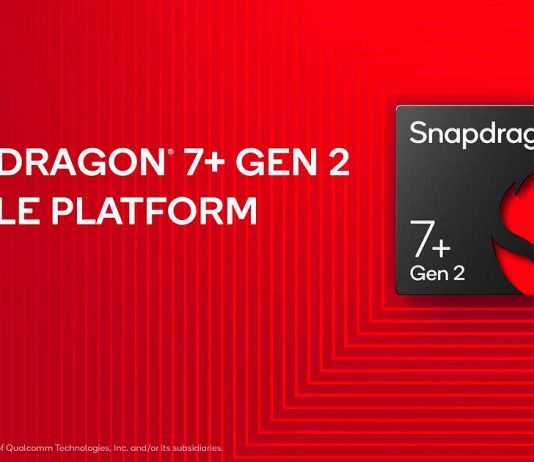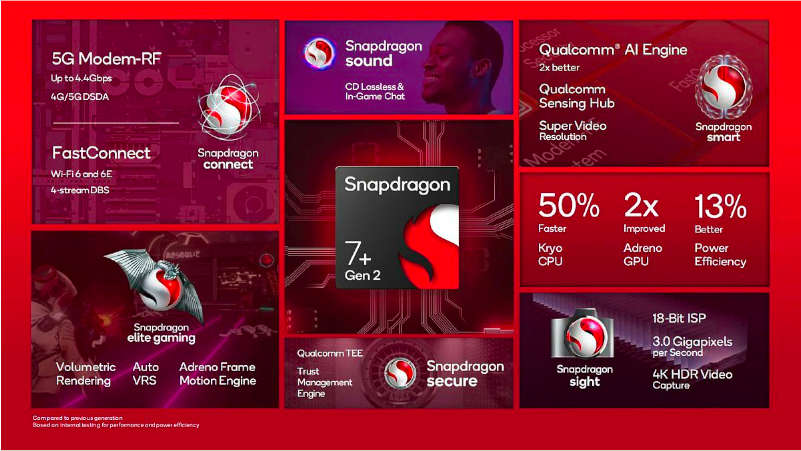Qualcomm has announced its latest chipset, the Snapdragon 7+ Gen 2, which will be available in many mid-range smartphones from the end of March 2023.
Positioned as the successor to last year’s Snapdragon 7 Gen 1, this chipset is focused on improving performance rather than adding new features. The Snapdragon 7+ Gen 2 offers the biggest performance boost ever for the Snapdragon 7 family, shifting from Samsung’s 4nm to TSMC’s 4nm process.
The new chipset features a CPU configuration of 1+3+4, and Qualcomm has chosen one of Arm’s Cortex-X cores as the prime core, the Cortex-X2. This is Qualcomm’s first time it has chosen one of Arm’s Cortex-X cores as the prime core in a Snapdragon 7 part. The Cortex-X2 boosts both IPC and clock speeds, and the peak clock of the prime cores has improved from 2.4GHz to 2.91GHz. However, the trade-off is that with only one Cortex-X2 core, the big performance boost is only available for single-threaded workloads. The three middle (performance) cores are again Cortex-A710 based and clocked 2% higher than before.
The Snapdragon 7+ Gen 2 also incorporates a faster Adreno GPU, although Qualcomm doesn’t give a product number or disclose important architectural details. It appears to use a larger version of Qualcomm’s existing GPU and bumped up the clock speeds.
Regarding other features, the Snapdragon 7+ Gen 2 has a triple 18-bit Spectra ISP that supports 1x 200MP or 108MP with ZSL, 64+36MP with ZSL, and 3x 32MP with ZSL. It also supports 4K HDR video and 64MP burst capture. The integrated modem is the X62 (5G NR Sub-6 + mmWave), with DL=4400 Mbps and 5G/4G Dual SIM Dual Active (DSDA).
Overall, the Snapdragon 7+ Gen 2 chipset is a significant upgrade over last year’s Snapdragon 7 Gen 1. It focuses on improving performance rather than adding new features. The choice of one of Arm’s Cortex-X cores as the prime core also provides a significant improvement in IPC and clock speeds. With its new features and improvements, the Snapdragon 7+ Gen 2 chipset will be a popular choice for many mid-range smartphones in the coming months.



